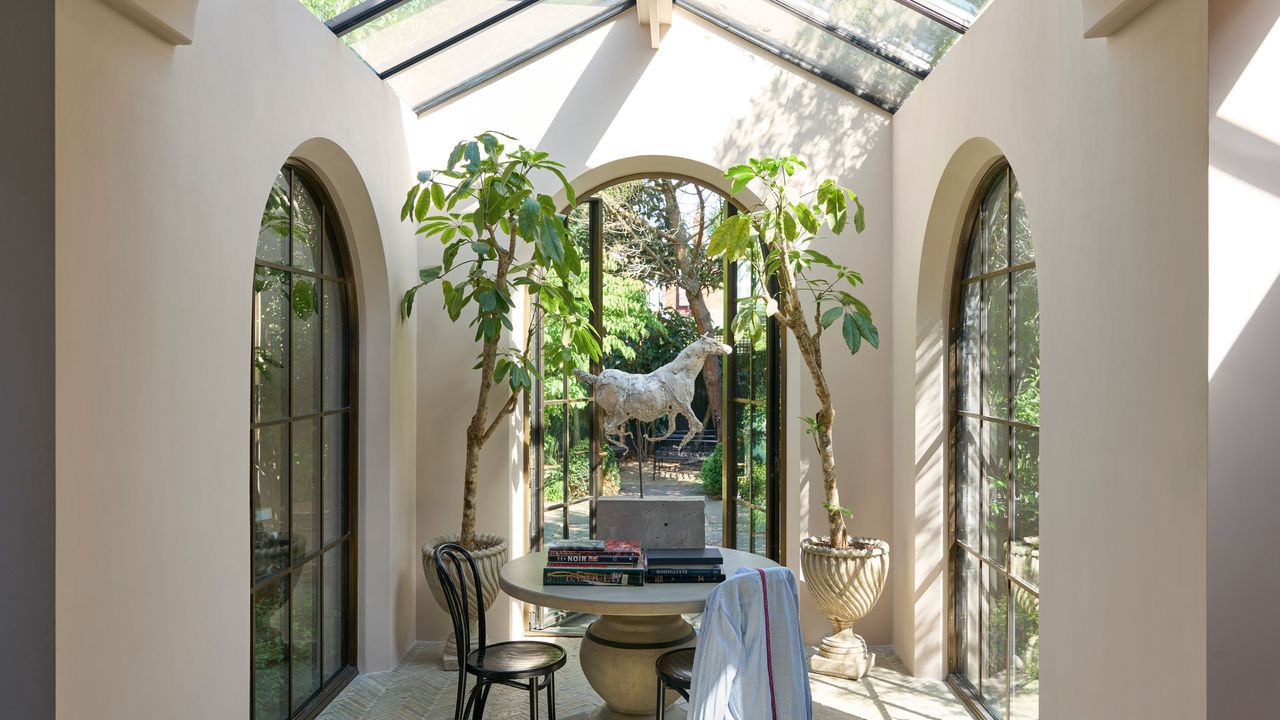
Do you love using your conservatory in summer but find it a little too chilly when the seasons change and the temperature drops? It's an issue for many, but one that is easy to remedy. With the advice ahead, you can create a comfortable space that feels warm in the winter and can be enjoyed all year round.
Most modern conservatories are fitted with triple glazing and underfloor or other types of heating, which help to maintain a more even temperature. However, older structures may lack these fundamentals and require further interventions.
Whether you want to use your conservatory for hosting a crowd over the festive season, or would just like a little extra living space, the ideas ahead can be fitted retrospectively and range from decorative to practical. Opt for one or two, or go for all five; either way, you will feel a noticeable difference in the comfort, coziness, and usability of your conservatory.
1. Fit Thermal Curtains and Blinds

Much heat is lost through older types of glazing, and modern window treatments can reduce this. Opting for thermal curtains and/or blinds will make a substantial difference. Lined with materials that trap heat, thermal curtains and blinds can still be made with your favorite fabrics, yet due to the special linings, they work hard behind the scenes to keep the cold out and the warmth in.
"Thermal curtains are one of the easiest wins," says Lisa Hensby, Founder & Creative Director, Lisa Hensby Design & Build Studio. "I can’t tell you how many homes I visit where the windows are stunning but letting out so much heat. Around 30% of a home’s warmth disappears through the glass, so adding thermal curtains can really help. They work like a cosy blanket for your windows, keeping the cold air out and the warm air in.
"My top tip is to make the most of natural warmth. Keep your curtains open during the day to let the sun warm the room, then close them as soon as the light fades to lock the heat in. It sounds simple, but it can reduce heat loss by up to 25 per cent and you’ll notice the difference if you want to use the room on a cold evening."
"Even curtains lined or interlined with a nice, heavily weighted fabric can really warm up the space," says interior designer Irene Gunter. "It makes the conservatory feel cosier, as well as physically adding insulation to any draft that comes through the windows."
Color: Natural
Size: Ws 117cm, 168cm, 228cm, 284cm x Ds 137m, 182cm, 228cm, 274cm
2. Lay Carpet or Large rugs
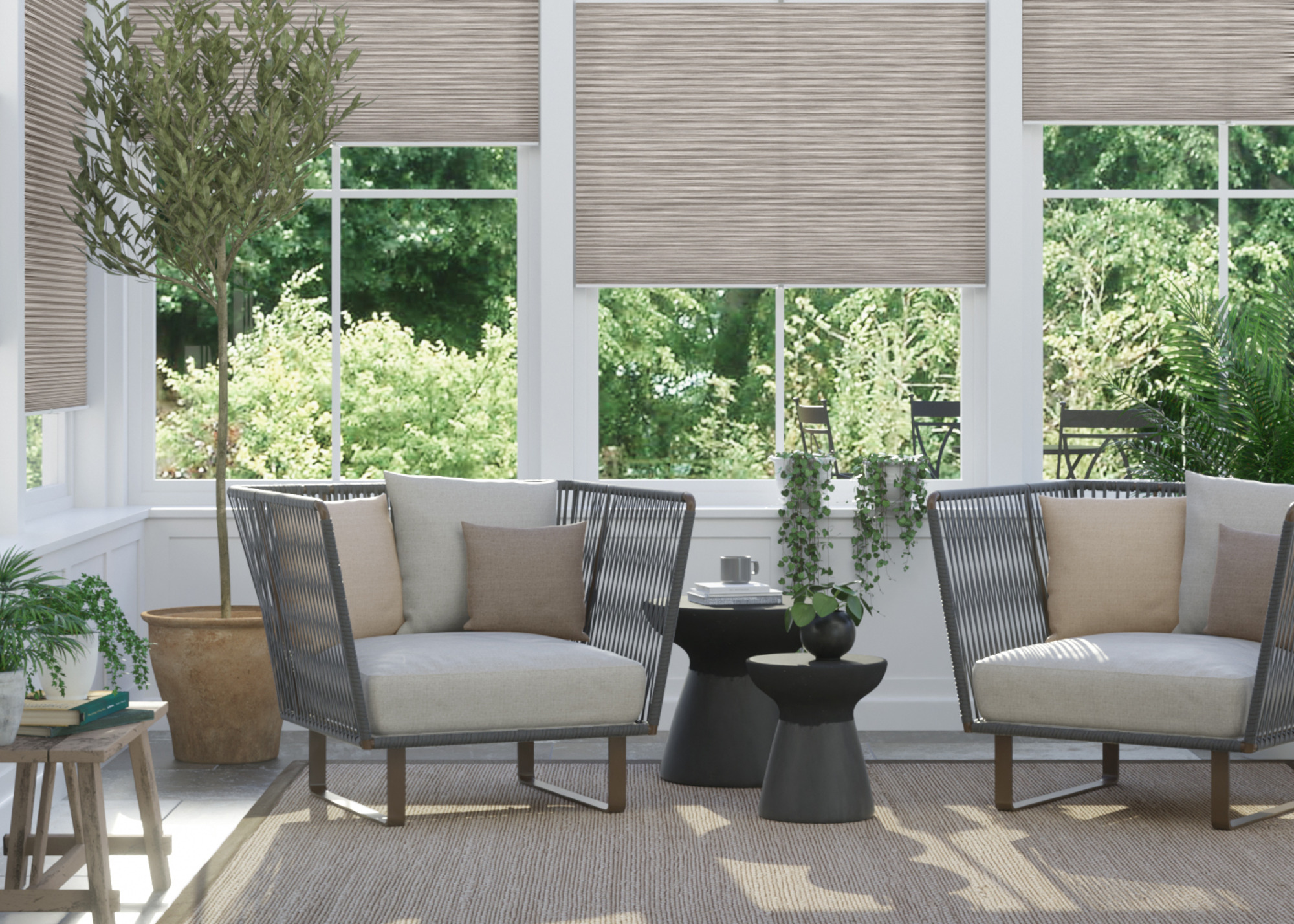
As a conservatory connects the home and garden, most people opt for hard flooring in these spaces for practical reasons. However, during the winter months, when there's less indoor-outdoor living, the addition of a large rug or carpet in your conservatory will make the floor feel warmer underfoot and give a cosier vibe.
“Hard flooring materials like tiles, stone, or laminate are popular in conservatories because they're practical and easy to maintain, but they're also excellent conductors of cold, which means they can draw heat away from the room and feel uncomfortably cold underfoot," says Mervyn Montgomery, founder of conservatory manufacturer Hampton.
Mervyn continues, “Adding rugs or carpet to a conservatory floor is a simple yet surprisingly effective way to improve warmth and comfort during the winter months. Beyond the thermal benefits, rugs also add a layer of comfort that can transform how a conservatory feels and functions in winter. They're one of the most affordable and non-permanent solutions available, with no installation required, and the option to roll up and store if a cooler floor is preferred during the summer months."
3. Ensure Window and Door Frames Are Sufficiently Sealed
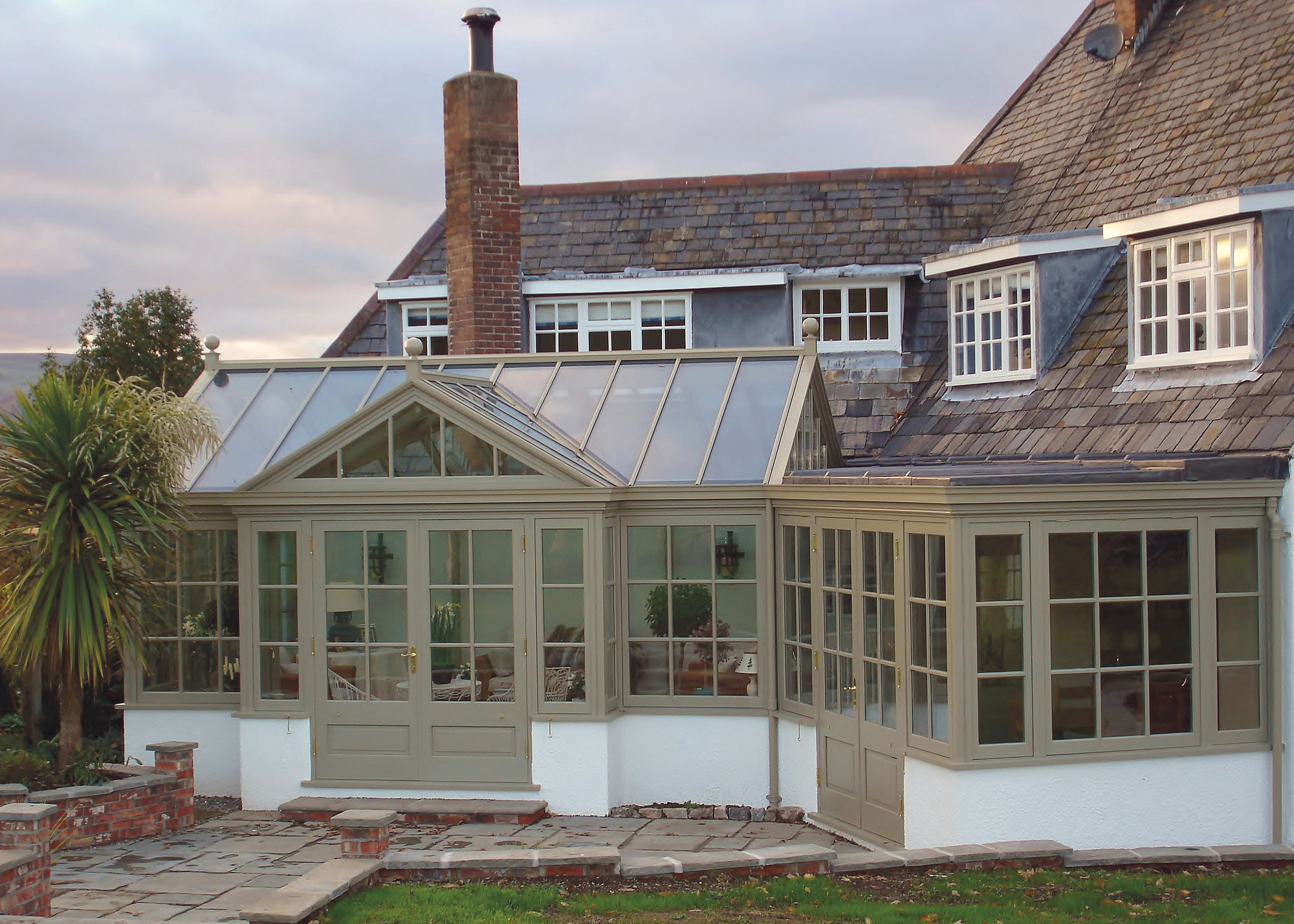
Of all the suggestions to make a cold room warmer, this is the one to tackle first. It's also one of the simplest. Yet ensuring that any draughty gaps are sealed and the heat that you do have isn't escaping, is an easily forgotten factor when wanting to warm up a space. We get it – it's not as fun as choosing fabrics or rugs — but it'll make the biggest difference for the least expense.
"Definitely check your insulation and sealing," says Lisa. "This isn’t the most glamorous job, but it can have the biggest impact. Over time, seals around windows, doors, and roof panels can loosen or perish, letting cold air in and warm air escape. Replacing old seals, adding draught excluders and applying a layer of insulation to dwarf walls or the roof lining can make the space up to 50 per cent more thermally efficient."
"Addressing draughts by sealing gaps around windows, doors, and frames is a quick, yet effective method to improve a conservatory's warmth," agrees Mervyn. "Over time, the rubber seals and gaskets in conservatory glazing can perish or become compressed, creating gaps that allow warm air to escape and cold air to infiltrate. Simply replacing these seals or adding draught excluders to door thresholds can make an immediate and noticeable difference to comfort levels throughout the colder months."
You can get your hands on a draught excluder from different retailers. For example, on Amazon, you can buy a Draught Excluder Tape for Windows for just £10.99.
This is one of the most cost-effective improvements, according to Mervyn, "as the materials are inexpensive and, in many cases, it's a straightforward DIY job or a quick task for a local tradesperson. Addressing draughts first creates a solid foundation before investing in other heating solutions, ensuring that any warmth generated stays where it's needed."
4. Install An Additional Radiator or Wall Panel
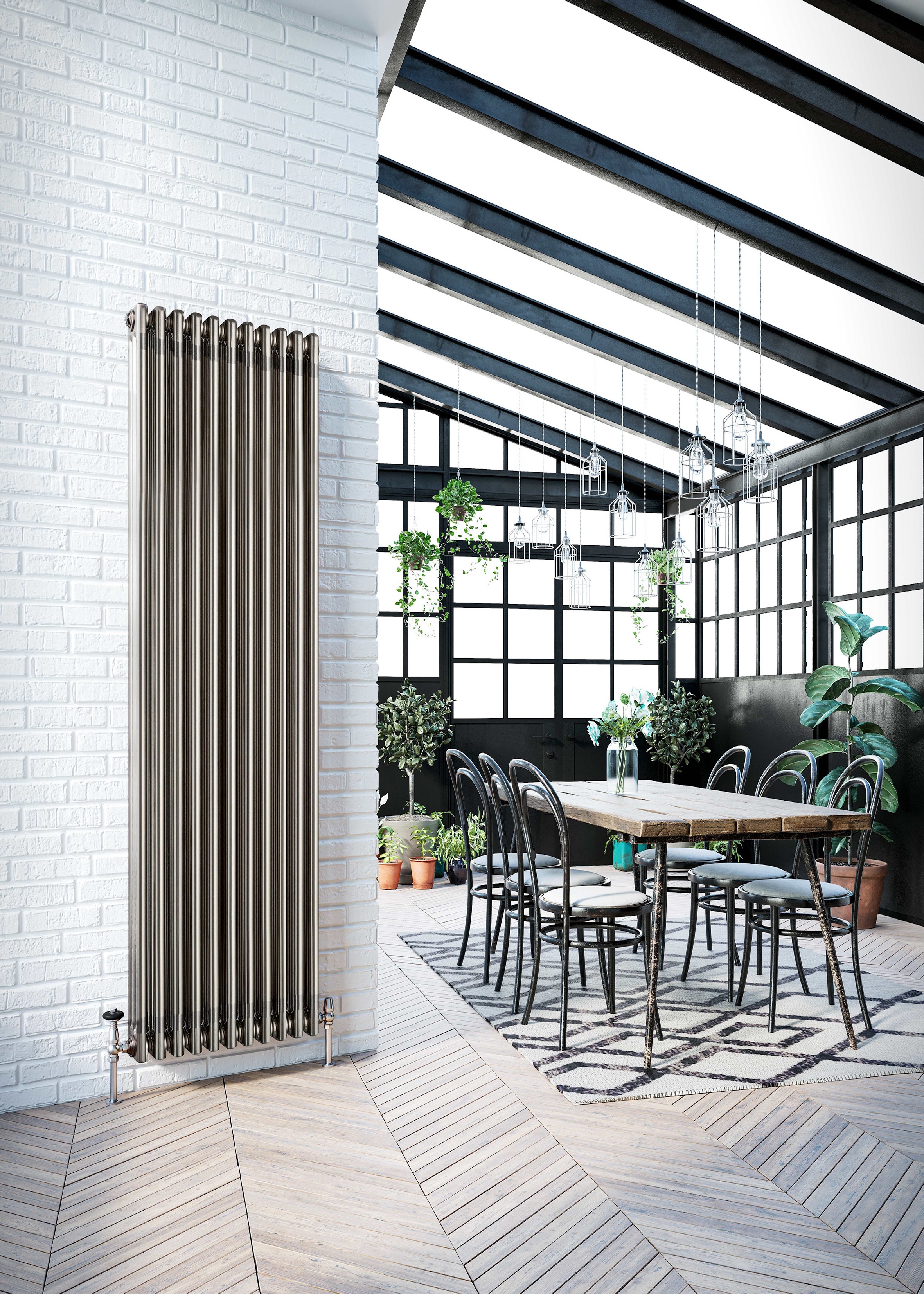
If your conservatory window, door trims, and frames are sufficiently sealed and you've added cozy curtains and carpets, yet it's still on the chilly side, it may be necessary to install additional heating. The option you choose will depend on what you have already and whether there is pipework laid that can be easily connected. If you don't want the upheaval of running pipes under the floor for radiators, there are alternatives.
"If the conservatory is already connected to the home’s main heating system, it may be relatively simple to extend the existing pipework to feed a new radiator," says Nick Duggan, managing director of The Radiator Centre. "However, if the pipe runs are difficult to access, for example, if they’re beneath concrete or tiled floors, this could involve lifting some of the flooring to route new pipes. In other cases, pipework can sometimes be concealed neatly along walls or within skirting profiles to avoid more invasive work.
"For homeowners who’d prefer to avoid any disruption, there are plenty of alternative options. Electric radiators and infrared panels are popular plug-in choices that don’t require connection to a central heating system. They can provide effective, controllable warmth and are particularly well suited to spaces like conservatories that may be used intermittently."
"Bioethanol fires are also fantastic, as they don't need a flue," says Irene. "They can come in the shape of tabletop candles, or they can look like a more traditional approach to a fireplace. In a relatively small space, say 3 x 3 m or less, they can really add quite a significant amount of heat and really make it more usable in the winter months."
5. Consider Underfloor Heating
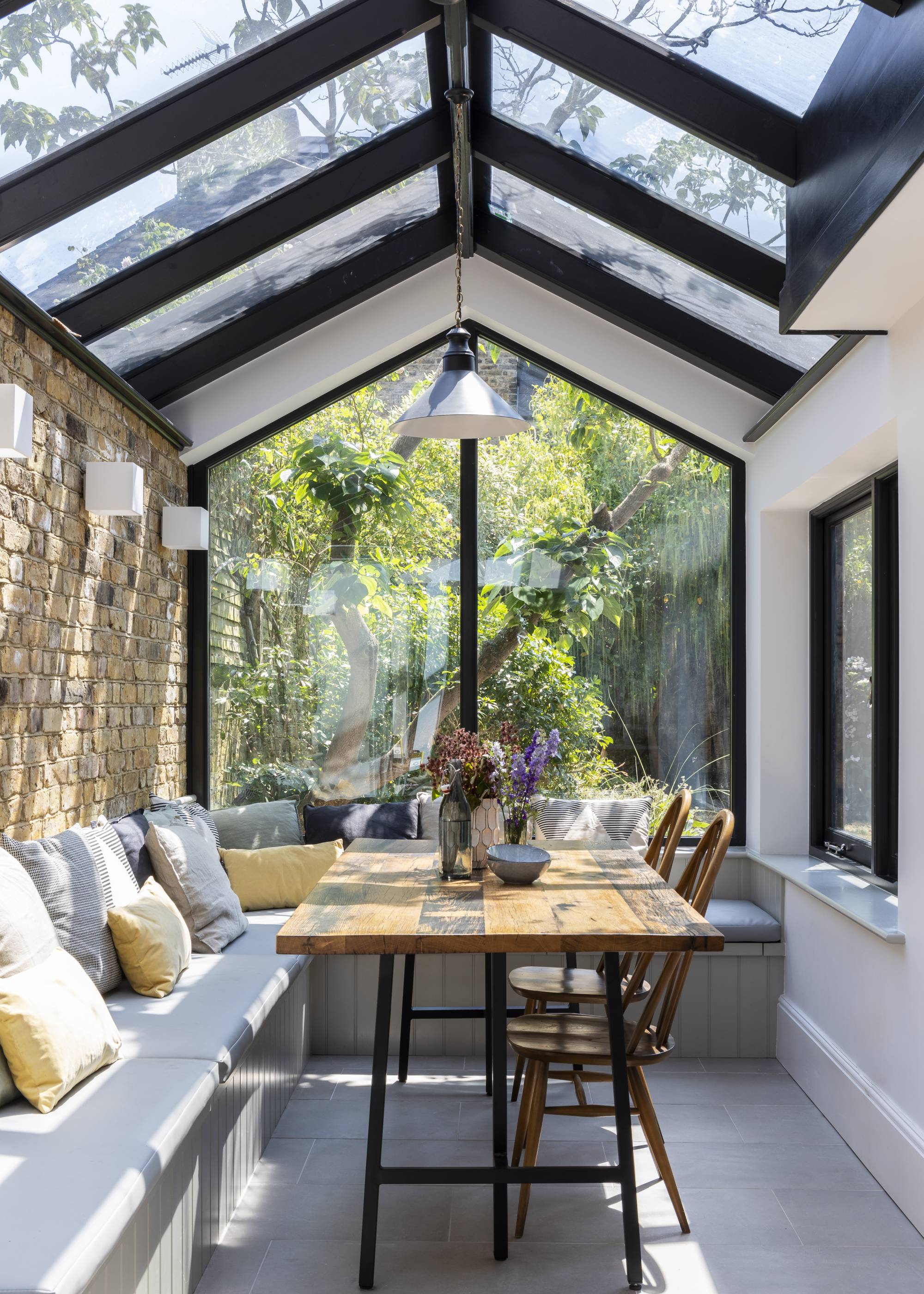
One of the issues with heating a conservatory is the lack of vertical space to place radiators or infrared panels, as much of the structure is glazing. If you're lacking wall space, it is possible to retrofit underfloor heating with various floor types.
"Underfloor heating is one of those upgrades that you’ll never regret," says Lisa. "It gives a gentle, even warmth underfoot. The result is a consistent, cosy heat that can raise the room temperature by around five to seven degrees compared to an unheated floor, which makes a real difference in a conservatory or open-plan space.
"There are two main types to consider. Electric underfloor heating uses cables or mats fitted directly beneath your flooring. It’s ideal for smaller spaces and retrofit projects because it heats up quickly and doesn’t require major construction work. Water-based systems connect to your central heating and circulate warm water through pipes beneath the floor. They’re more efficient for larger spaces or new builds, but need more installation work and depth."
This warm-up self-adhesive underfloor heating mat from Amazon would be a great option, and it's only £95.98.
But Lisa warns, "If you’re fitting underfloor heating, make sure your flooring installer and electrician coordinate on the final floor height. A few millimetres might not sound like much, but it can make all the difference to how smoothly doors open once everything is finished."
FAQs
What's the Cheapest Way to Heat a Conservatory?
This will depend on the cost of the different types of fuel in your region. However, good insulation and energy efficiency are a priority when aiming to keep bills low, whichever way you choose to heat your conservatory.
"When it comes to keeping a conservatory comfortable without racking up high bills, the key is two-fold: minimise heat loss first, then choose a heating method aligned to how often and how you use the space," says Nick Duggan, Managing Director, The Radiator Centre.
"Simple measures like fitting thermal or heavy-lined blinds, adding thick curtains and rugs, and sealing up any draughts around windows, doors, or roof panels can make a noticeable difference by trapping warmth inside. For a longer-term solution, upgrading key elements such as the glazing or roof structure will help the space retain heat far more effectively."
Nick says once your conservatory is well insulated and free from draughts, "it’s important to choose a heating method that suits how often you use the space. If it’s a room you spend time in daily, extending your home’s central heating system is usually the most cost-efficient and comfortable option, provided it’s practical to do so."
He continues: "For conservatories used more occasionally, a targeted solution such as an electric panel heater, oil-filled radiator, or plug-in device can be more economical, as you only heat the room when needed. However, it’s worth noting that some types, like basic fan heaters, can become costly if left running for long periods.
"A common method is to work out the room’s heat requirement in kilowatts (kW), which takes into account its volume and insulation. Heating professionals can perform a detailed heat-loss calculation, which considers all the variables that affect how quickly the space gains or loses heat."
As already outlined by our experts, start with the easiest options, such as sealing draughts, and adding thermal curtains and carpets or rugs, and gauge the difference in temperature. If your conservatory is still a little chilly, larger retrofits, such as additional heating or upgrading old glazing for modern high-performance glass, may be necessary to improve thermal efficiency.
"There are plenty of cost-effective retrofits available that result in minimal disruption, so expensive structural changes are not always required when wanting to warm up a cold conservatory," says Mervyn. "Homeowners are often surprised by how much difference simple measures can make, particularly when combining various upgrades together."







